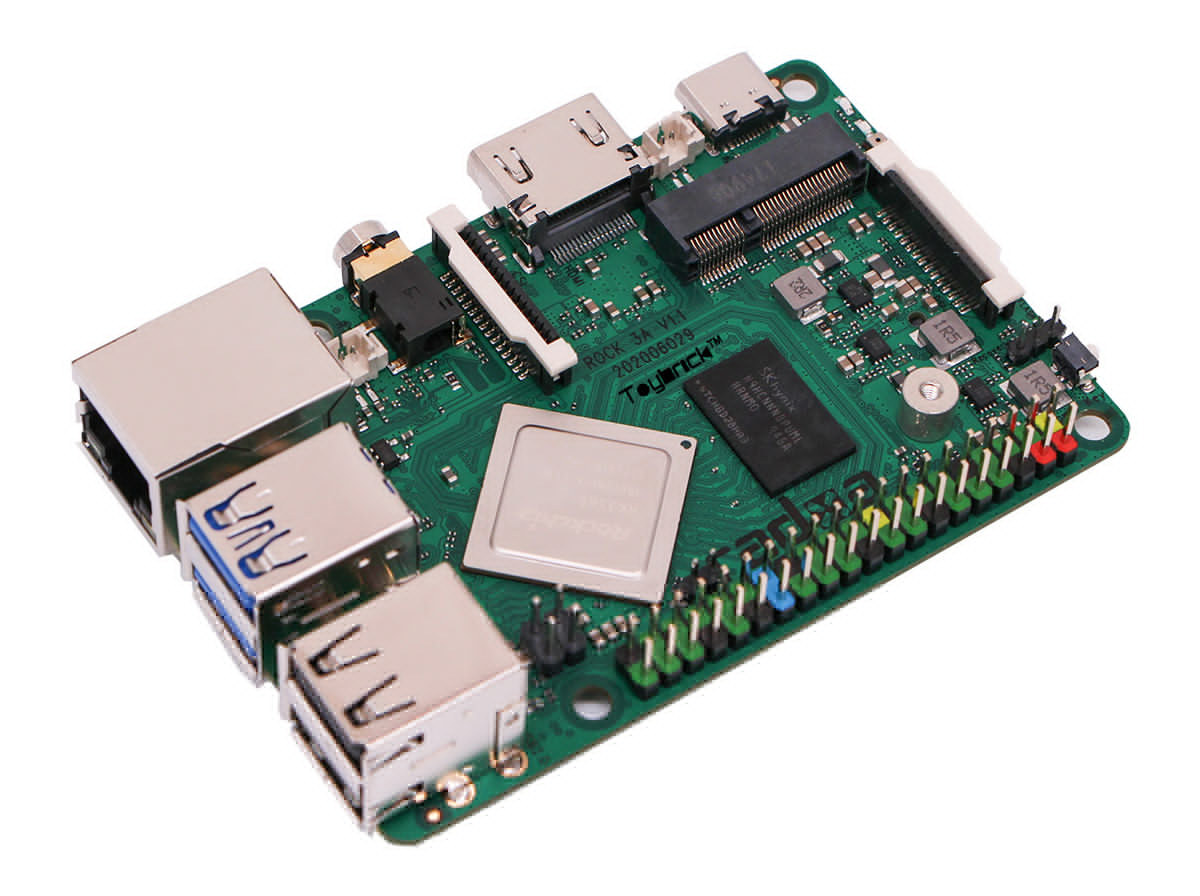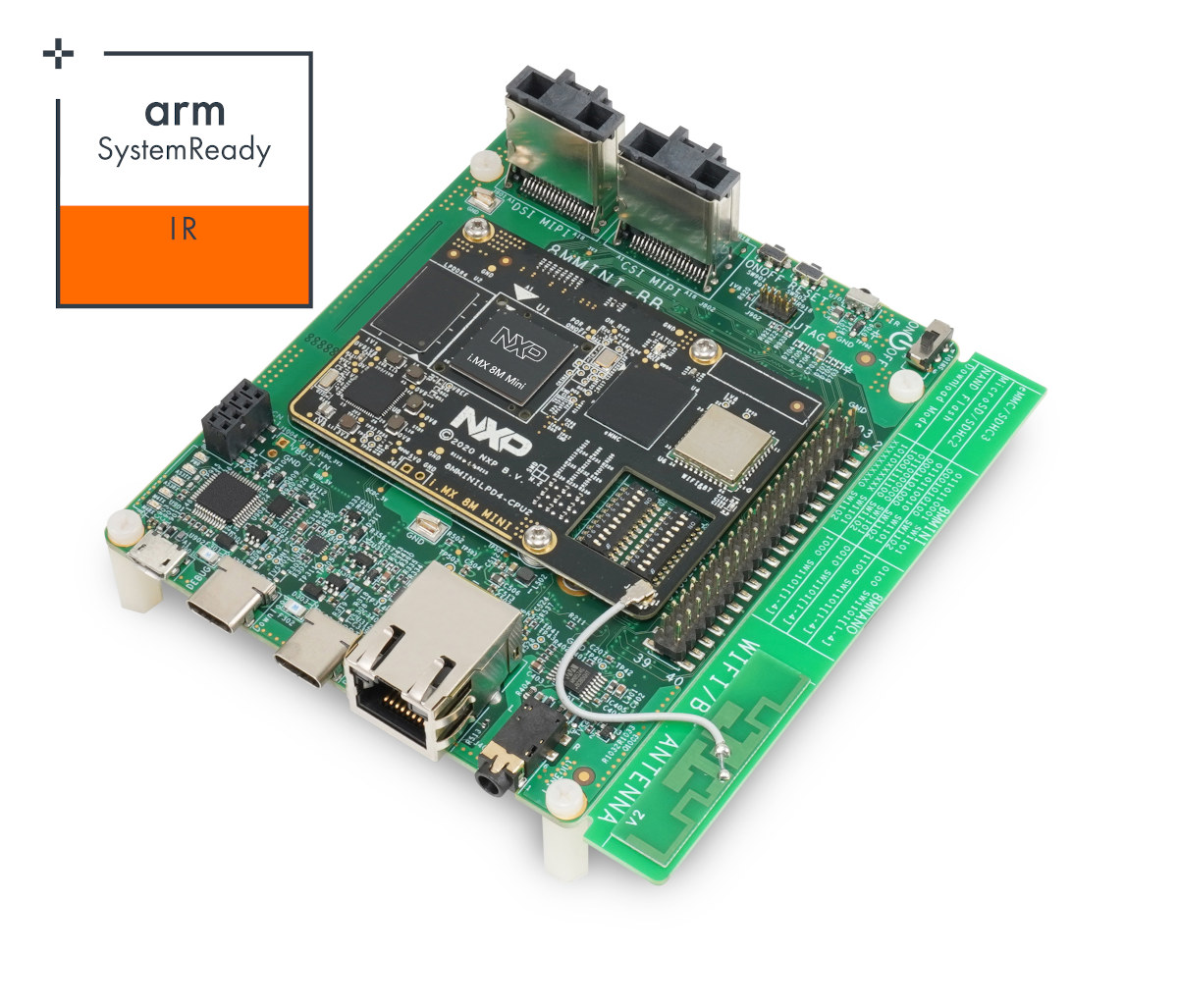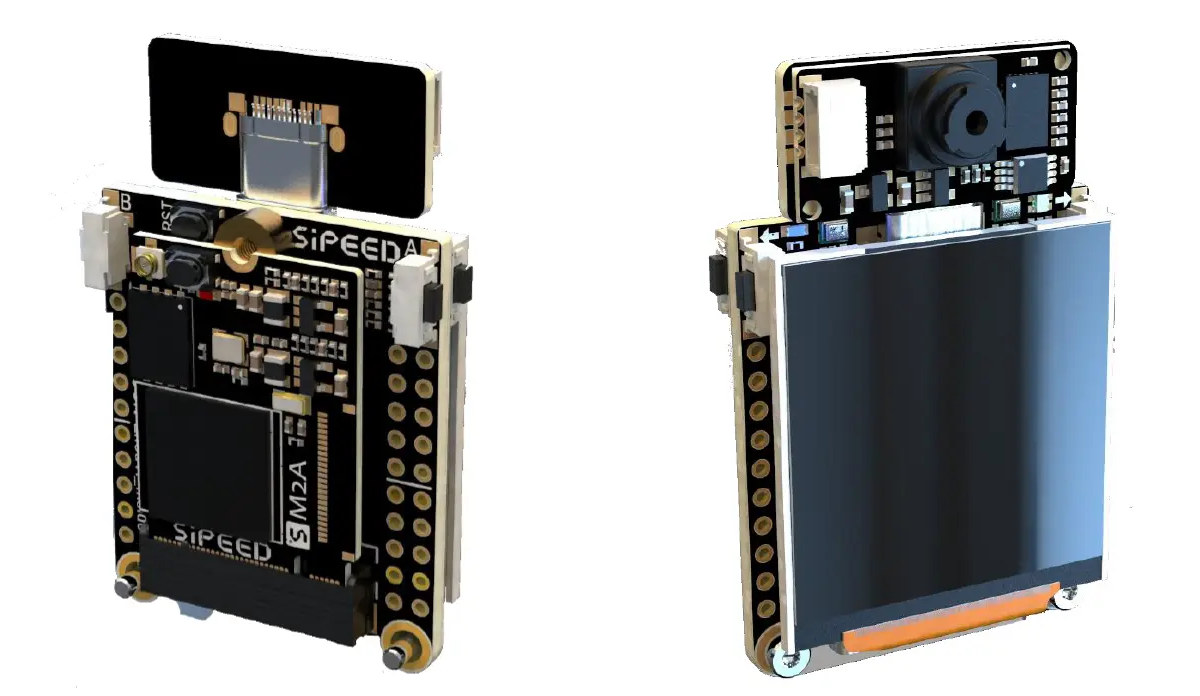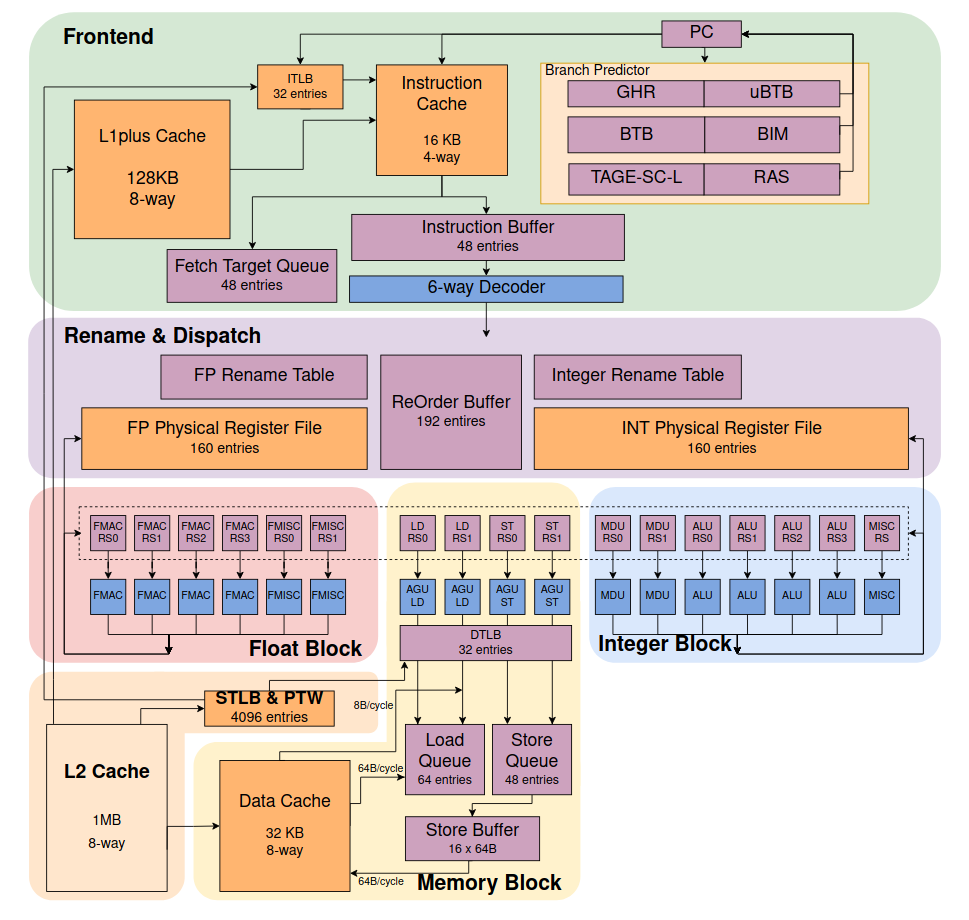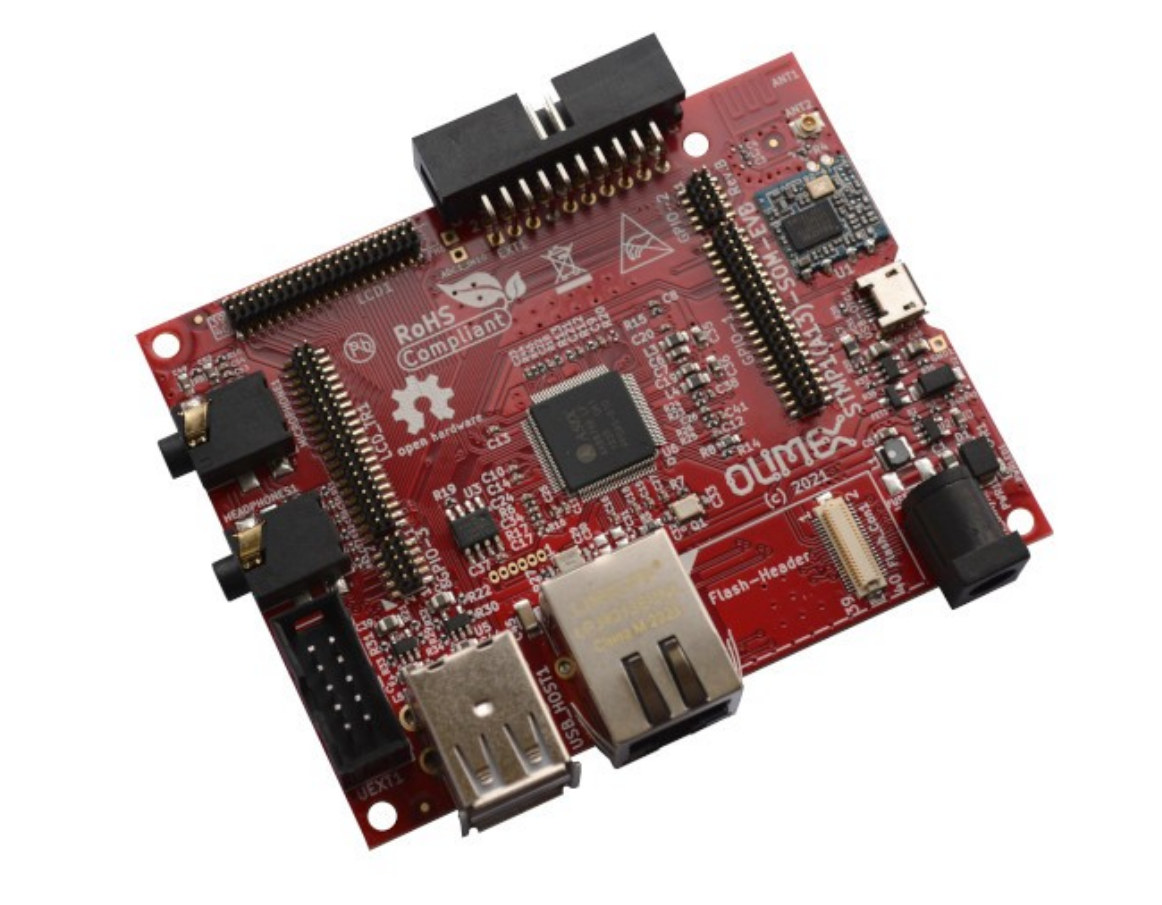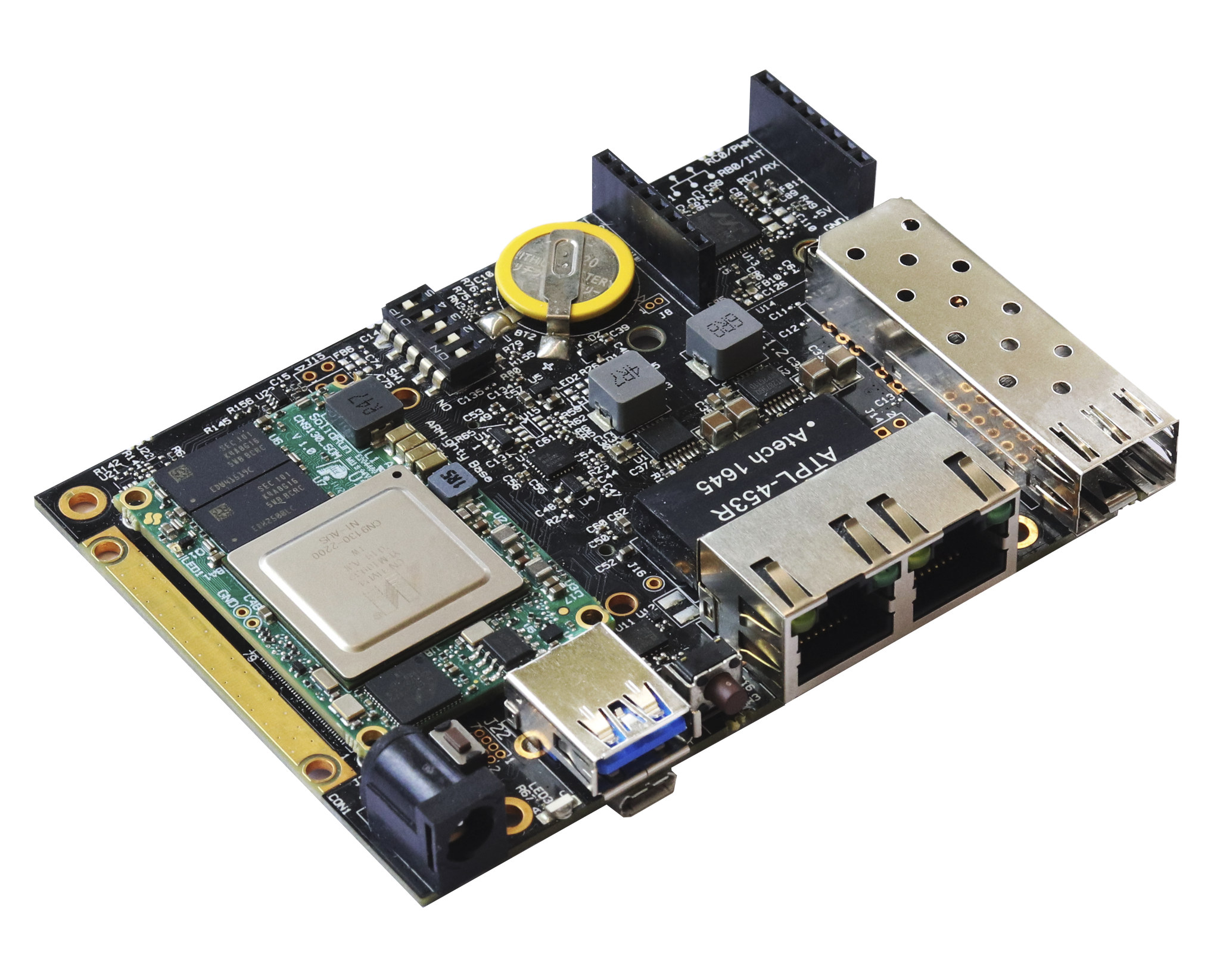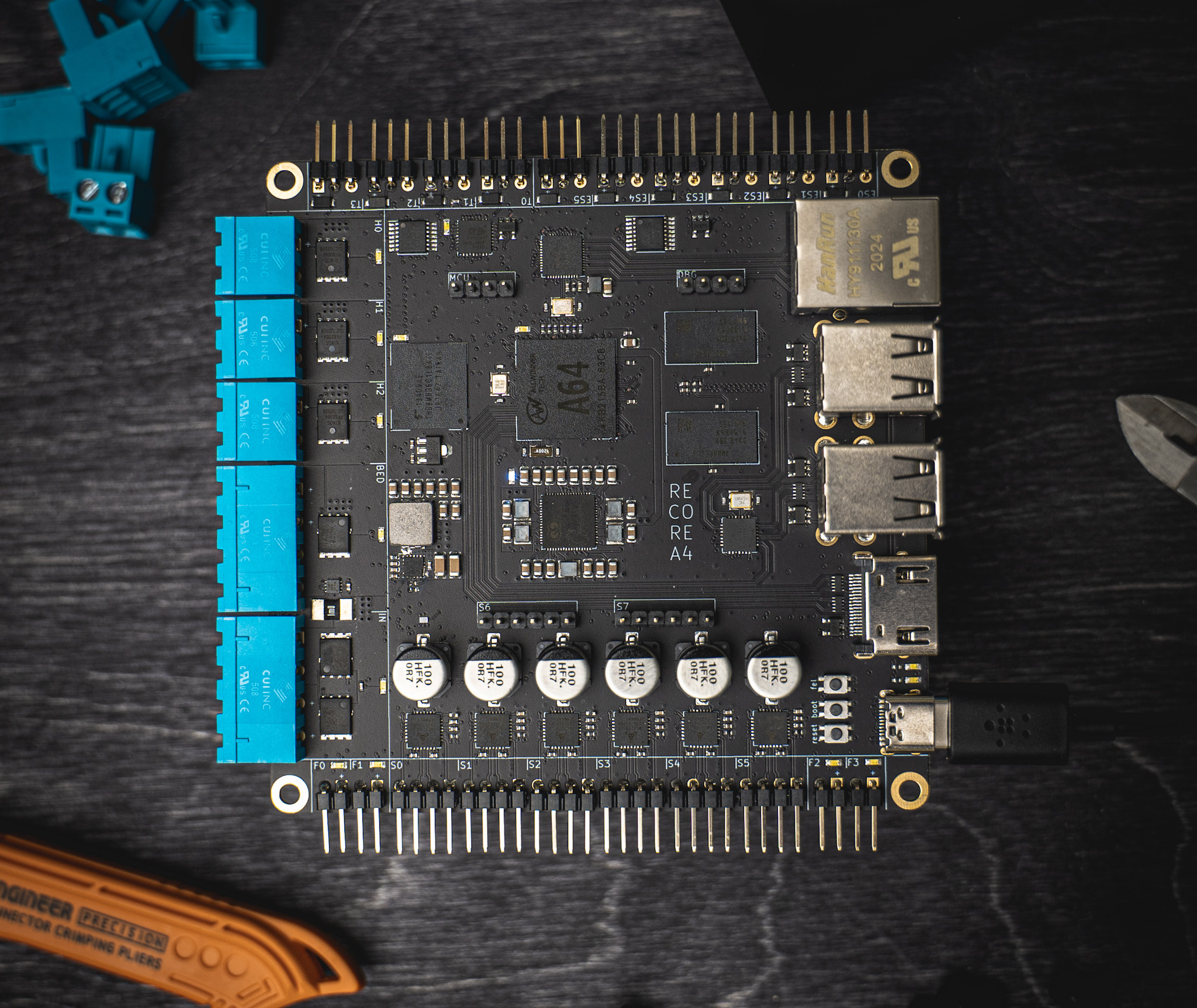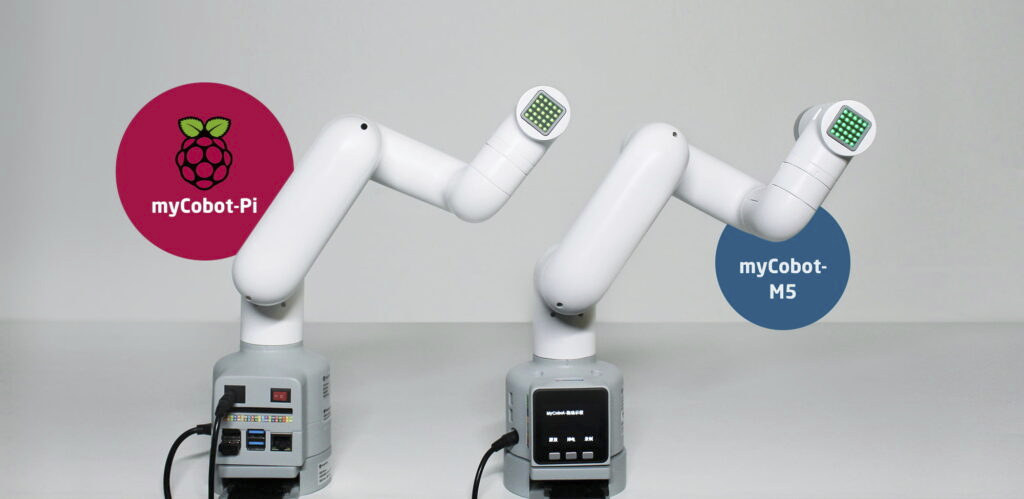Radxa ROCK 3A is a single board computer powered by Rockchip RK3568 quad-core Cortex-A55 processor that closely follows Raspberry Pi 3 Model B form factor like the early Rock Pi 4 SBC, but with a twist. By switching from a Rockchip RK3399 to a Rockchip RK3568, the board loses some CPU and GPU performance, but gains extra I/Os with enabled the company to add an additional M.2 slot with PCIe to ROCK 3A board, meaning it’s now possible to attach one NVMe SSD and another M.2 module like a WiFi 6 M.2 card. ROCK 3A preliminary specifications: SoC – Rockchip RK3568 quad-core Cortex A55 processor at up to 2GHz, with Mali G52 GPU, 0.8TOPS NPU System Memory – 2GB, 4GB, 8GB LPDDR4 3200MT/s, up to 1560MHz Storage Pluggable eMMC module MicroSD card slot M.2 M key socket for NVMe with PCIe 3.0 x2 lanes 4MB SPI flash with support for […]
The first Arm SystemReady IR certified platforms – NXP i.MX 8M Mini EVK & Compulab IOT-GATE-IMX8 gateway
A few months ago, we noted SolidRun HoneyComb LX2K became a certified Arm SystemReady ES platform. SystemReady is a certification program by Arm that ensures systems just work with generic operating systems like in the x86 world. When we looked at the details of the program in the article, we noted there were different categories including SystemReady ES for embedded servers and SystemReady IR for IoT Edge applications. The first SystemReady IR platform – NXP i.MX 8 Mini evaluation kit Arm has just announced the first SystemReady IR platform had just been certified. That device is the NXP i.MX 8M Mini EVK, and that means that anyone that uses the i.MX 8M family of devices with the associated Board Support Package (BSP) can build platforms that will pass the same certification process and boot compliant Linux distributions with minimal integration effort. We can see more details about the certifications on Arm developer’s website. NXP i.MX 8M Mini EVK achieved certification with NXP 2021 Q2 pre-release firmware, version LF […]
MAIX-II A AI camera board combines Allwinner R329 smart audio processor with USB-C camera
Earlier this year, we wrote about Sipeed MAIX-II Dock AIoT vision devkit with an Allwinner V831 camera processor with a small 200 MOPS NPU, an Omnivision SP2305 2MP camera sensor, and a 1.3-inch display. But for some reason, which could be supply issues, Sipeed has designed a much different variant called MAIX-II A with a board based on Allwinner R329 smart audio processor, a 720p30 USB camera module, and a 1.5-inch display. MAIX-II A board specifications: Main M.2 module – Maix-II A module with Allwinner R329 dual-core Cortex-A53 processor @ 1.5 GHz, 256MB DDR3 on-chip, a dual-core HIFI4 DSP @ 400 MHz, and Arm China AIPU AI accelerator for up to 256 MOPS, plus Wi-Fi & BLE and a footprint for an SPI Flash. Storage – MicroSD card socket Display – 1.5-inch LCD display with 240×240 resolution Audio – Dual microphones, 3W speakers Camera – 720p USB-C camera module based […]
XiangShan open-source 64-bit RISC-V processor to rival Arm Cortex-A76
SiFive Performance P550 was supposed to be the most powerful RISC-V core to date, capable of outperforming Arm’s Cortex-A75 core in raw performance, but especially in terms of efficiency, with three times the performance per mm2. But there may be an even more powerful RISC-V processor, albeit developed as a research project, with the Chinese Academy of Science (CAS)’s XiangShan open-source processor presented at the recent RISC-V World Conference China 2021 with the goal of matching Cortex-A76 performance. The project was launched on June 11, 2020, and 25 classmates and teachers participated in the development of Xiangshan with 821 main branch code mergers, 3296 code submissions, more than 50,000 lines of code, and more than 400 documents, mostly in Chinese only for now. This culminated with an 8-core prototype built based on Yanqihu (雁栖湖) architecture using TSMC’s 28nm process with the processor running up to 1.2 or 1.3 GHz that […]
Olimex STM32MP1 SoM and evaluation board support Linux 5.10
Olimex has just announced the availability of an STMicro STM32MP1 Cortex-A7/M4 powered system-on-module (SoM) and an evaluator board with respectively STMP15X-SOM available in extended and industrial temperature variants, as well as STMP1(A13)-EVB evaluation board that works with the new STM32MP1 module, as well as earlier A13-SOM Allwinner A13 based system-on-module. Beyond the hardware, the company told us their upcoming STMP1-OLinuXino-LIME2 SBC could support mainline Linux in February, and the company prepared some Linux 5.10 based Debian Buster and Ubuntu Focal images which are now also available for the STMP15X-SOM module. STMP15X-SOM system-on-module Specifications: SoC – STMicro STM32MP151/153/157 dual-core Cortex-A7 @ 650 to 800MHz and Arn Cortex-M4 real-time core @ 209 MHz System Memory – 256 or 512 MB DDR3L Storage – MicroSD card socket Audio – On-module audio codec Board-to-board connectors GPIO-1 40-pin connector with 39 GPIOs, 3x UARTs, 1x QuadSPI, 2x I2C, 2x eMMC GPIO-2 10-pin connector with USB […]
ClearFog CN9130 networking boards deliver 10GbE through a tiny Octeon TX2 module
SolidRun has designed and manufactured ClearFog networking boards ever since the introduction of the Marvell ARMADA 380/388-based ClearFog Pro in 2015. Since then, more powerful models have been launched including the ClearFog GT 8K based on Marvell ARMADA A8040 quad-core Cortex A72 processor with support for 2.5GbE and 10GbE, and the ClearFog CX LX2K equipped with a 16-core Cortex-A72 NXP capable of 100GbE networking. The Israeli company unveiled its first Octeon TX2-based design last fall with ClearFog CX CN9K, a full-featured networking SBC fitted with CEx7 CN9132 COM Express Type 7 module. But now the company has launched the more compact ClearFog CN9130 Pro/Base networking boards equipped with a tiny 50x30mm Octeon TX2 module still enabling 10GbE connectivity. SolidRun SOM 9130 system-on-module Specifications: SoC – Marvell OCTEON TX2 CN9130 quad-core Cortex A72 processor @ up to 2.2 GHz (commercial) or 2.0 GHz (industrial) System Memory – Up to 8GB DDR4 […]
3D printer board leverages Allwinner A64’s AR100 core for real-time control
Elias Bakken has been working on Recore 3D printer control board based on Allwinner A64 processor since 2019 and with revision “A5” of the PCB, Recore is now considered stable and will ship to customers. But wait? Isn’t Allwinner A64 just a quad-core Cortex-A53 processor meant to run Linux? But 3D printer control boards require real-time I/O and that’s why many are designed with STM32, Arduino compatible Microchip MCU or other microcontrollers. The trick here is that Elias did not use the Cortex-A53 cores for real-time control, but instead the 300 MHz AR100 32-bit OpenRISC 1000 core found in Allwinner A64 SoC. Recore specifications: SoC – Allwinner A64 quad-core Cortex-A53 processor running at 1 GHz, with AR100 32-bit core @ 300 MHz, Mali-400MP2 GPU System Memory – 1 GB DDR3 RAM Storage – 8 GB eMMC flash Video Output – HDMI output to connect a display Networking – Gigabit Ethernet […]
MyCobot robotic arm is offered with Raspberry Pi 4 or M5Stack ESP32 modules
Elephant Robotics’ MyCobot robotic arm was introduced last year with M5Stack Atom & Basic ESP32 modules with 6-degrees of freedom, a 250 grams max payload, available now for $599. The company has launched a new $699 version – MyCobot-Pi – with most of the same features, except for an upgrade to Raspberry Pi 4B which offers more performance and flexibility. Both versions of MyCobot arm robotic arm support accessories such as a gripper and a suction pump attachable through a LEGO connector, but while the original version – MyCobot-M5 – relies on Arduino programming, the new MyCobot-Pi runs Debian/Ubuntu and ROS operating systems with image recognition algorithms that can work with a variety of cameras. Since we’ve missed last year’s announcement, we’ll cover both models in this article. MyCobot Robotic Arm Despite the mechanical parts being the same, the specifications for MyCobot-M5 and MyCobot-Pi differ quite a lot: Controller MyCobot-M5 […]


